Honey is a natural, sweet food product bees produce. The production process involves several steps and influences the final chemical composition of honey. Honey is produced from honeydew or flower nectar. On this basis, various types of honey can be distinguished.
Multiple flavors, aromas, and health properties characterize this honey. Due to their specific composition, specific honeys are indicated for particular ailments.

True liquid honey is a thick liquid that crystallizes over time. Various types of honey often differ in color. Honey is usually straw-golden or dark brown. It can be transparent or opaque. Honey can also take on different colors when producers add additional ingredients, such as fruit preserves.
Nowadays, beekeeping is one of the essential branches of agriculture worldwide. Its importance lies in the extraction of valuable bee products from the apiaries. For centuries, honey has been used as a remedy. We use it not only in cooking but also in cosmetology and medicine.
Scientists from many countries have noted that honey has beneficial properties. In addition to honey, products of similar origin, such as royal jelly![]() , pollen
, pollen![]() , or propolis
, or propolis![]() , are also worth noting. All these products have a broad spectrum of biological effects. Honey and products derived from it are characterized by their general strengthening and healing properties and are non-toxic. Let us find out exactly what values honey contains. However, it is essential to note that various types of honey may differ in composition.
, are also worth noting. All these products have a broad spectrum of biological effects. Honey and products derived from it are characterized by their general strengthening and healing properties and are non-toxic. Let us find out exactly what values honey contains. However, it is essential to note that various types of honey may differ in composition.
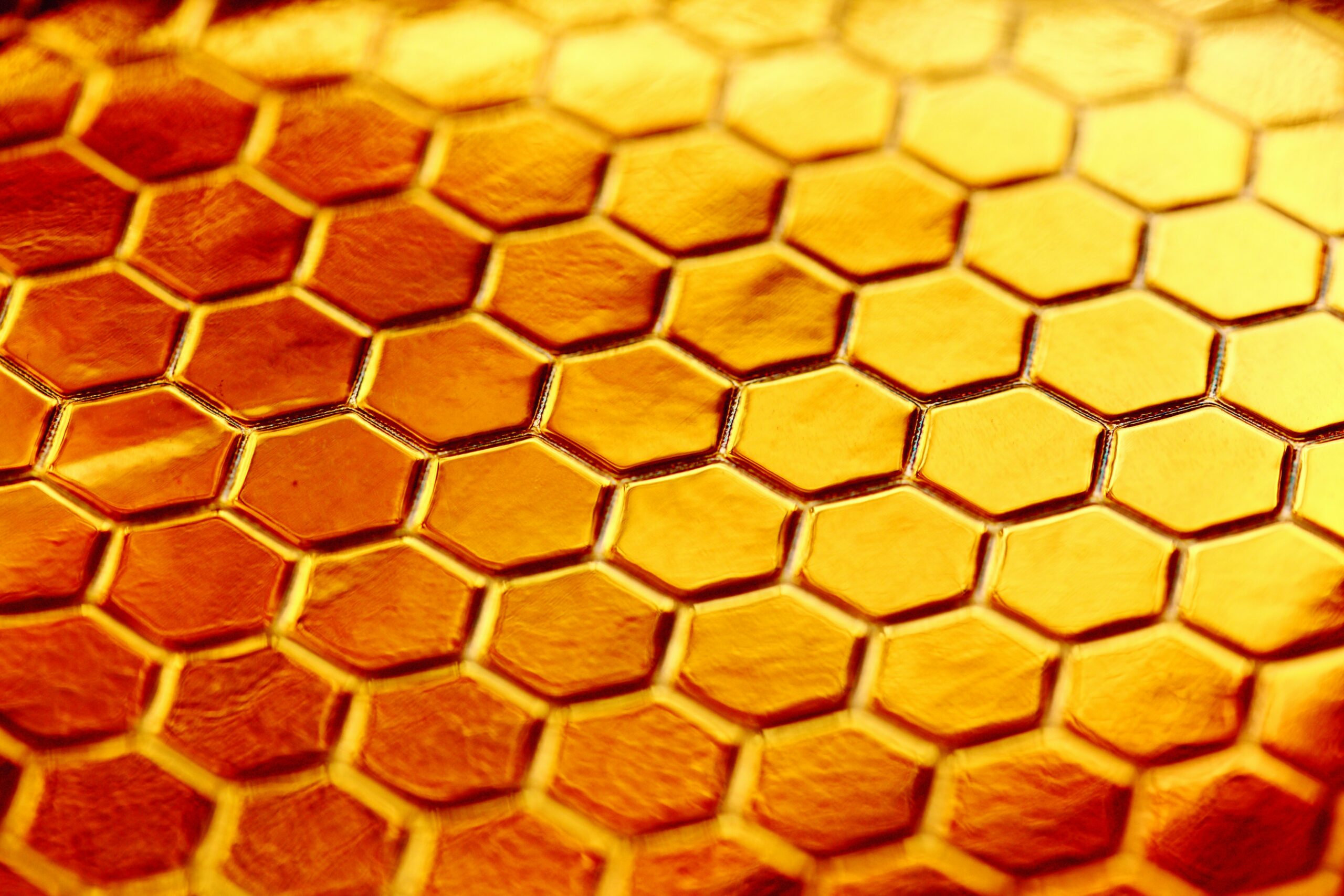
Honey consists mainly of carbohydrates. The nutritional and energy value of 100 grams of natural honey contains approximately 80 grams![]() of carbohydrates. There are roughly 325 kcal
of carbohydrates. There are roughly 325 kcal![]() in 100 g of honey. However, these values can vary, depending on the type of honey. Carbohydrates, or sugars or saccharides, are organic compounds of carbon, hydrogen, and oxygen. Based on their molecule size, they are divided into simple sugars and complex sugars.
in 100 g of honey. However, these values can vary, depending on the type of honey. Carbohydrates, or sugars or saccharides, are organic compounds of carbon, hydrogen, and oxygen. Based on their molecule size, they are divided into simple sugars and complex sugars.
It is the primary source of energy in the daily diet. They are essential for the proper functioning of the human body. However, some carbohydrates should be present in our diet in limited quantities. Honey contains a large amount of simple sugars we should be careful about. Simple carbohydrates give us energy but should not be consumed in excess.
Carbohydrates are sugars, but the sugar distinction indicates the content of sugars such as monosaccharides: glucose, fructose, galactose, and disaccharides. In honey, there are sugars such as fructose![]() and glucose
and glucose![]() , which are simple sugars. Fructose and glucose are formed during the maturation process of honey. Scientists speculate that it is these that are primarily responsible for the medicinal properties of the product. Those types of honey with high glucose content in their composition quickly crystallize. Honey with a predominance of fructose takes longer to crystallize.
, which are simple sugars. Fructose and glucose are formed during the maturation process of honey. Scientists speculate that it is these that are primarily responsible for the medicinal properties of the product. Those types of honey with high glucose content in their composition quickly crystallize. Honey with a predominance of fructose takes longer to crystallize.
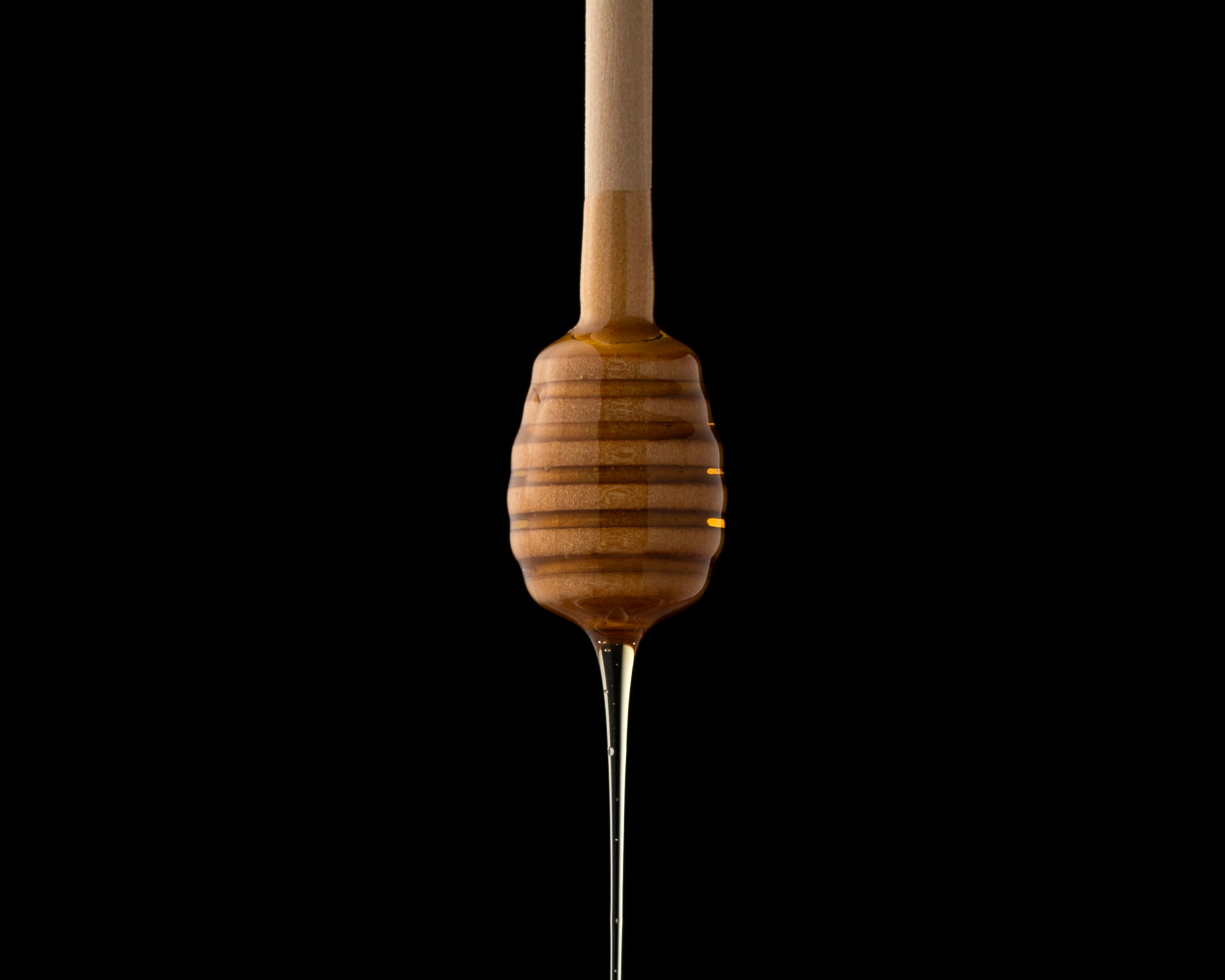
A monosaccharide that is widely found in nature. It can occur in free or bound form. Free fructose is mainly contained in honey. Of all naturally occurring carbohydrates, fructose is the sweetest. The liver must first process fructose. In small quantities, the liver can handle fructose effectively. When too much fructose reaches the liver, problems arise in metabolizing the sugar quickly enough.
Glucose is a simple sugar essential for the body to function correctly, as it is its primary energy source. Maintaining it at the right level is mainly dependent on the proper diet. Most of the carbohydrates we consume are made up of glucose chains. The body releases insulin to regulate glucose when it enters the bloodstream. Insulin allows glucose, used as energy, to join the cells.
Honey also contains small amounts of vitamins. It has the most Vitamin C![]() , although overall, the value is a small percentage of the daily intake. Vitamin C is a compound essential for the proper functioning of the body. It influences the immune and circulatory systems, accelerates wound healing, slows skin aging, and regulates collagen production. In addition to this, honey contains B vitamins
, although overall, the value is a small percentage of the daily intake. Vitamin C is a compound essential for the proper functioning of the body. It influences the immune and circulatory systems, accelerates wound healing, slows skin aging, and regulates collagen production. In addition to this, honey contains B vitamins![]() , namely Vitamin B1, B3, and B6. B vitamins are primarily necessary for the utilization of energy from food, , the maintenance of healthy skin and mucous membranes, the production of red blood cells. However, there are trace amounts of B vitamins in honey.
, namely Vitamin B1, B3, and B6. B vitamins are primarily necessary for the utilization of energy from food, , the maintenance of healthy skin and mucous membranes, the production of red blood cells. However, there are trace amounts of B vitamins in honey.
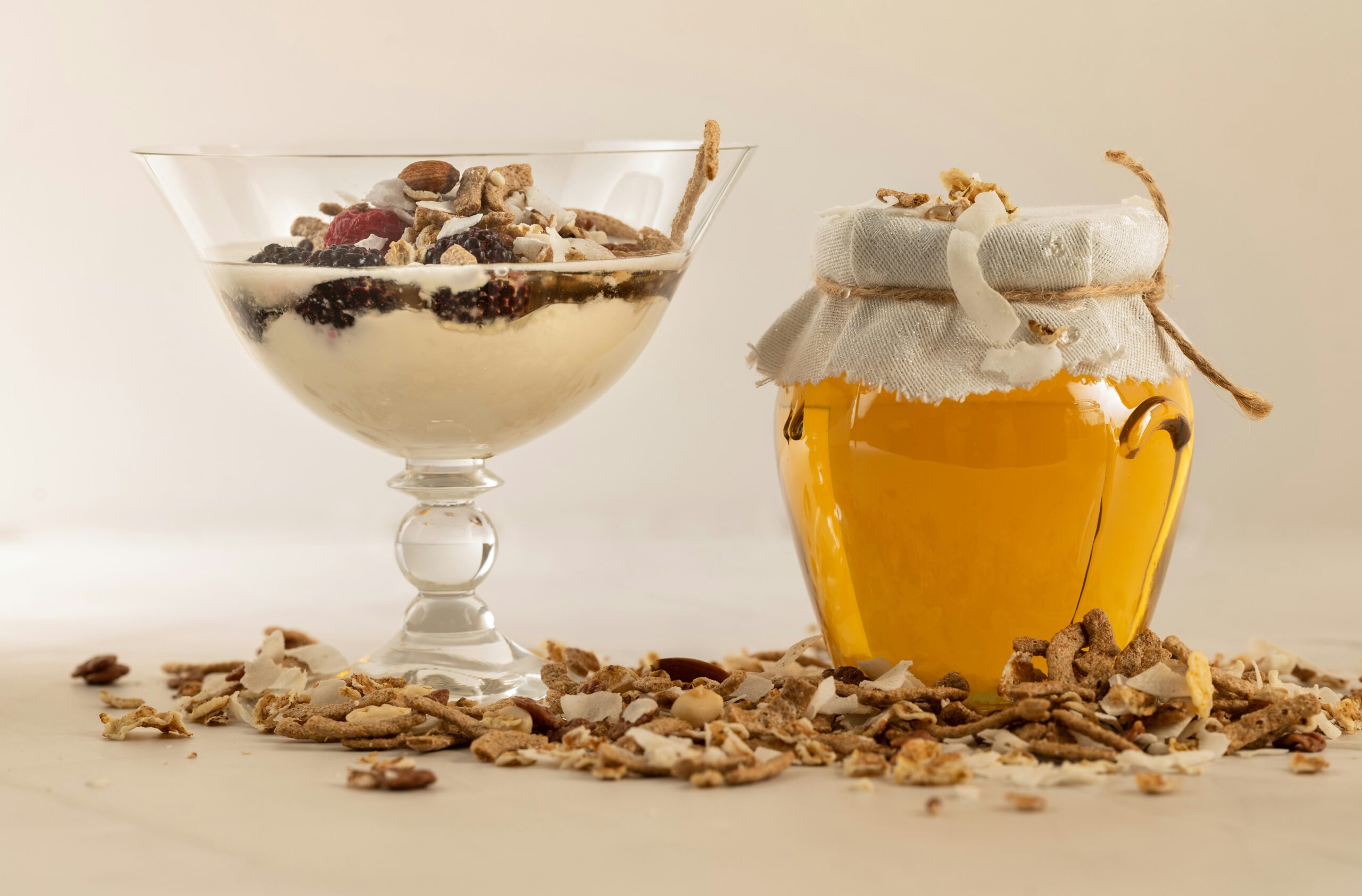
Natural honey contains a small amount of protein. The presence of proteins results in honey having a lower surface tension, determining the pronounced foaming tendency. Buckwheat honey has the highest protein content, and acacia or lime honey has the lowest. Unfortunately, honey does not have enough protein to be considered a high-protein product. However, it also has protein substances, i.e., amino acids![]() . Amino acids are the precursors that build proteins, which are the essential building blocks of the body. As many as 26 amino acids are present in honey. Of these, proline
. Amino acids are the precursors that build proteins, which are the essential building blocks of the body. As many as 26 amino acids are present in honey. Of these, proline![]() predominates. The content of the other amino acids and their relative proportions depend on the origin of the honey.
predominates. The content of the other amino acids and their relative proportions depend on the origin of the honey.
It is one of the amino acids essential for the proper functioning of the human body. It is due to one of the most crucial properties of proline, the fundamental building block of collagen molecules. Collagen, in turn, is one of the most essential protein fractions in the human body. A different property of proline is its ability to bind water. This amino acid will bind its molecules, and by doing so, it allows the skin to maintain the correct level of hydration.
Honey also contains trace amounts of minerals![]() . These include potassium, phosphorus, sodium, calcium, magnesium, and, in smaller quantities, iron, zinc, iodine, copper, and manganese. However, from a nutritional point of view, honey contains tiny amounts of minerals and, therefore, should not be the main source of micro and macro elements.
. These include potassium, phosphorus, sodium, calcium, magnesium, and, in smaller quantities, iron, zinc, iodine, copper, and manganese. However, from a nutritional point of view, honey contains tiny amounts of minerals and, therefore, should not be the main source of micro and macro elements.
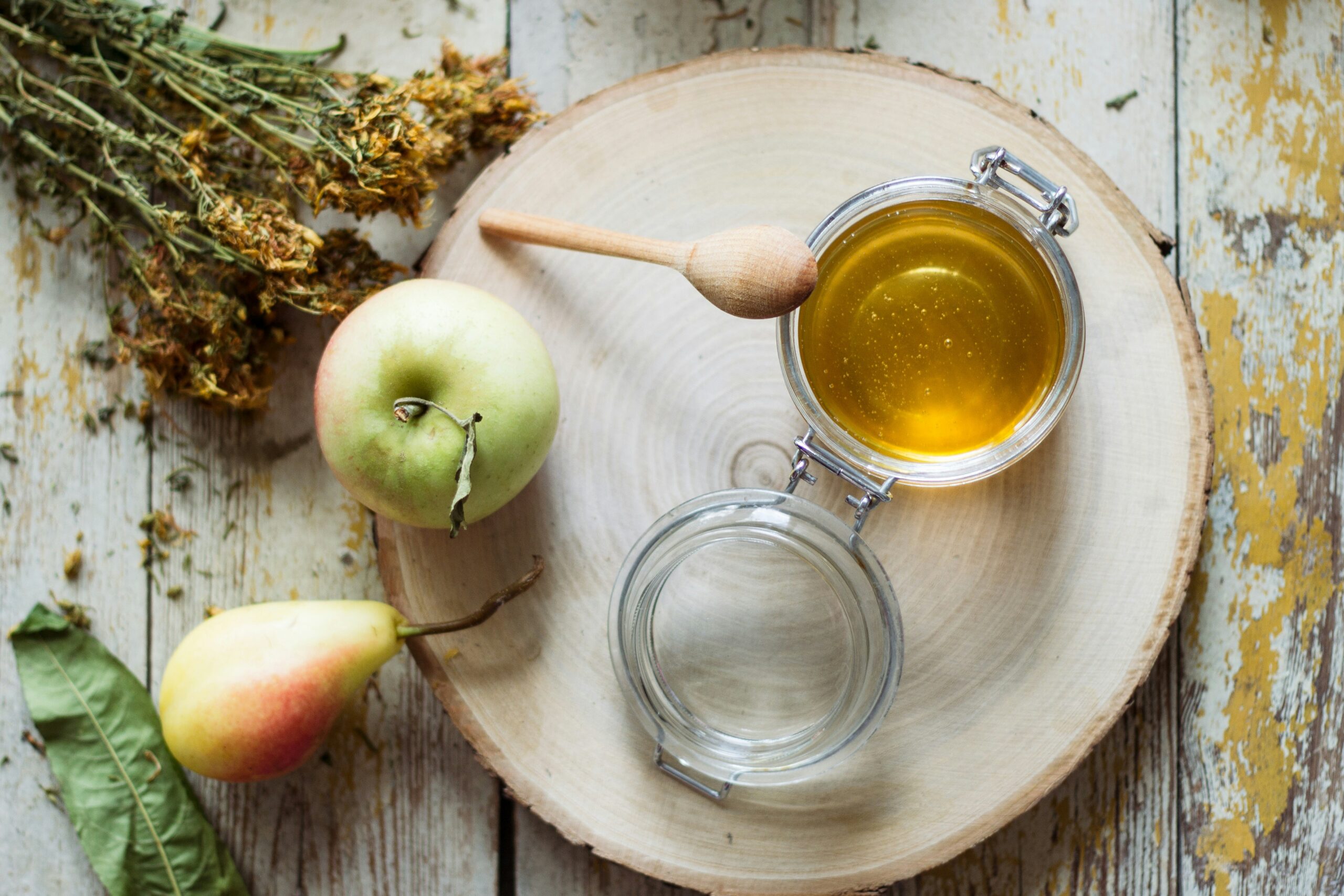
Honey contains the most potassium. This element is essential for adequately functioning the nervous and muscular systems. Potassium is involved in conducting nerve impulses, regulating blood pressure, and maintaining heart rhythm and electrolyte balance.
Phosphorus has many vital functions in the body. It is necessary for the proper functioning of all cells in the body. It participates in energy production and influences the development and functioning of bones, muscles, and the nervous system. Phosphorus plays a role in maintaining the acid-base balance in the body.
Sodium is an electrolyte essential for the proper functioning of the body, including muscles and nerves. It interacts with different electrolytes in the regulation of fluids in the body. Excess sodium levels are excreted from the body through the work of the kidneys and urine.
It is an essential element for the normal functioning of the human body. It is the primary building material of bones and teeth and a necessary activator of many enzymes involved in blood clotting. It also regulates the nervous system and influences muscle function and the secretion of hormones.
Magnesium is a nutrient that regulates many vital processes in the human body. It catalyzes protein, fat, and carbohydrate metabolism and influences nerve conduction, the cardiovascular system, and muscle contractility. It influences glucose and insulin levels and regulates bone metabolism.
The iron contained in honey is almost entirely bioavailable and rapidly incorporated into hemoglobin. Iron is a mineral and a key component with the ability to bind molecular oxygen. It builds the characteristic protein of red blood cells as haemoglobin. The function of iron in the body does not end there – it is involved in the body's energy metabolism.
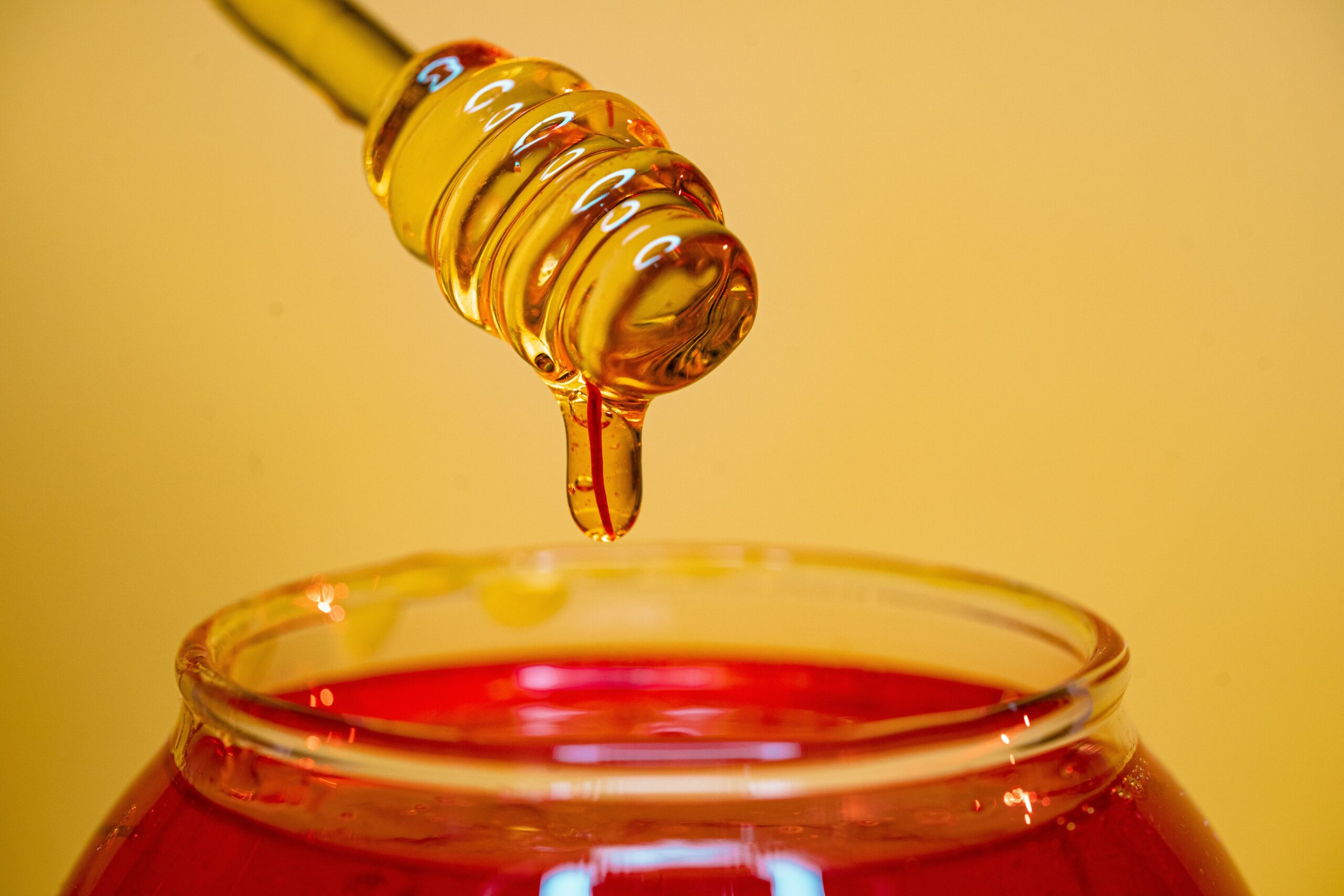
The taste qualities of natural honey are pleasant, the sweetness of the sugars being combined with the acidity that organic acids lend to honey. In small amounts, organic acids such as malic![]() , lactic
, lactic![]() , citric
, citric![]() , formic
, formic![]() , tartaric, and other acids are found in honey.
, tartaric, and other acids are found in honey.
The acid exhibits antibacterial, antifungal, and anti-inflammatory properties. It is also known for its potent antioxidant properties. Malic acid neutralizes the damaging effects of free radicals responsible for accelerated aging processes in the body.
The Lactobacillus acidophilus bacilli contained in honey produce lactic acid, resulting in the pH of the contents of the comb cell dropping, effectively protecting the pollen and honey mixture from spoilage. In addition to its moisturizing and exfoliating functions, lactic acid exhibits antibacterial and anti-aging properties.
This acid is a natural substance with an acidifying effect. Not only does it positively affect the taste of a particular product, but it also improves its shelf life, increases its use-by date, and helps preserve its color. Citric acid protects against free radicals, UV radiation, and air pollutants.
A preservative with strong fungicidal properties at high concentrations and low pH ranges. Its range of action also includes bacteria. Formic acid is a very effective agent used in honey production and, at the same time, safe for bees and honey. Formic acid breaks down rapidly and does not penetrate the beeswax.
Tartaric acid is widely used in the food, pharmaceutical, and cosmetic industries. It is also a by-product of wine fermentation. Tartaric acid and its salts are used as stabilizers and acidity regulators in the food industry. In food, tartaric acid occurs as a natural ingredient. In large quantities, however, it can have a laxative effect.
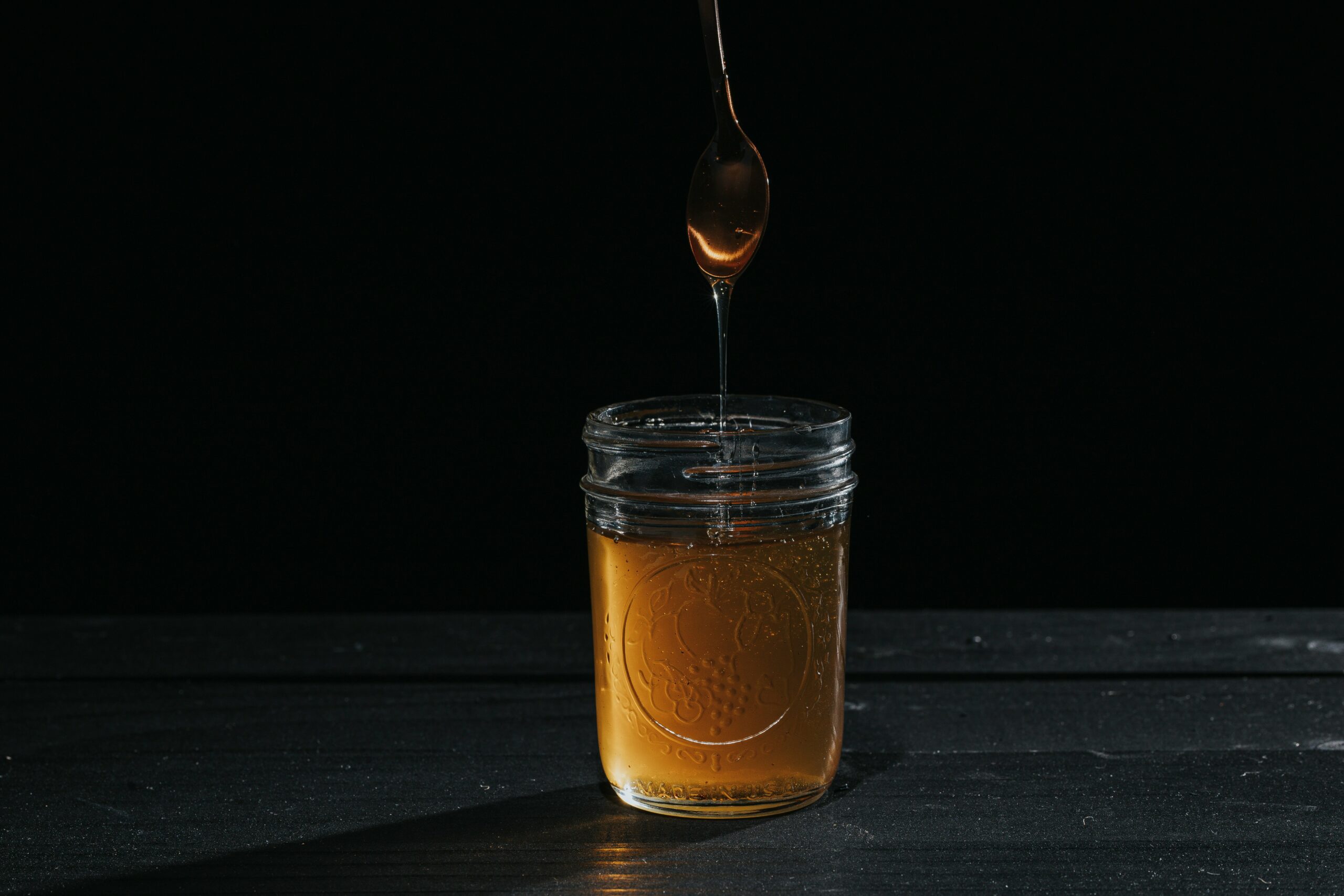
Raw honey is also a source of flavonoids and polyphenols. It is an antioxidant that has a soothing effect on inflammation. The type and concentration of polyphenols in honey depend on the kind of honey and the climatic conditions in which it is produced. Polyphenols in honey include phenolic acids![]() such as vanillic acid, syringic acid, p-coumaric acid, cinnamic acid, and flavonoids
such as vanillic acid, syringic acid, p-coumaric acid, cinnamic acid, and flavonoids![]() including quercetin and kaempferol. Light honey, such as acacia, rapeseed, and lime honey, was significantly lower than dark honeydew, heather, and buckwheat honey.
including quercetin and kaempferol. Light honey, such as acacia, rapeseed, and lime honey, was significantly lower than dark honeydew, heather, and buckwheat honey.
Phenolic acids exhibit antioxidant activity, so pharmaceutical companies use these compounds to produce drugs to help treat diseases. Daily, preventive supplementation with phenolic acids has a health-promoting effect on the body. Scientific studies have also shown that regular consumption of phenolic compounds lowers blood glucose levels and blood pressure. The highest amount of phenolic acids has been found in buckwheat honey.
Phytochemicals are naturally occurring plant substances with vibrant health-promoting effects. Flavonoids are a very diverse group of natural compounds. Flavonoids are used in the prevention and treatment of many diseases. They have a strong antioxidant effect and anti-inflammatory and anti-allergenic activity. Flavonoids reduce the risk of blood clots and have diuretic and hepatoprotective effects. Flavonoids consumed with the diet are now considered to be completely safe.
Honey and bee products have a broad spectrum of biological effects on the body and are characterized by their general strengthening and healing properties. They have beneficial effects on all organs and systems of the body and are non-toxic. They can be used in all age groups, except in rare cases of their intolerance. However, it should be noted that bee products do not always show a topical effect.
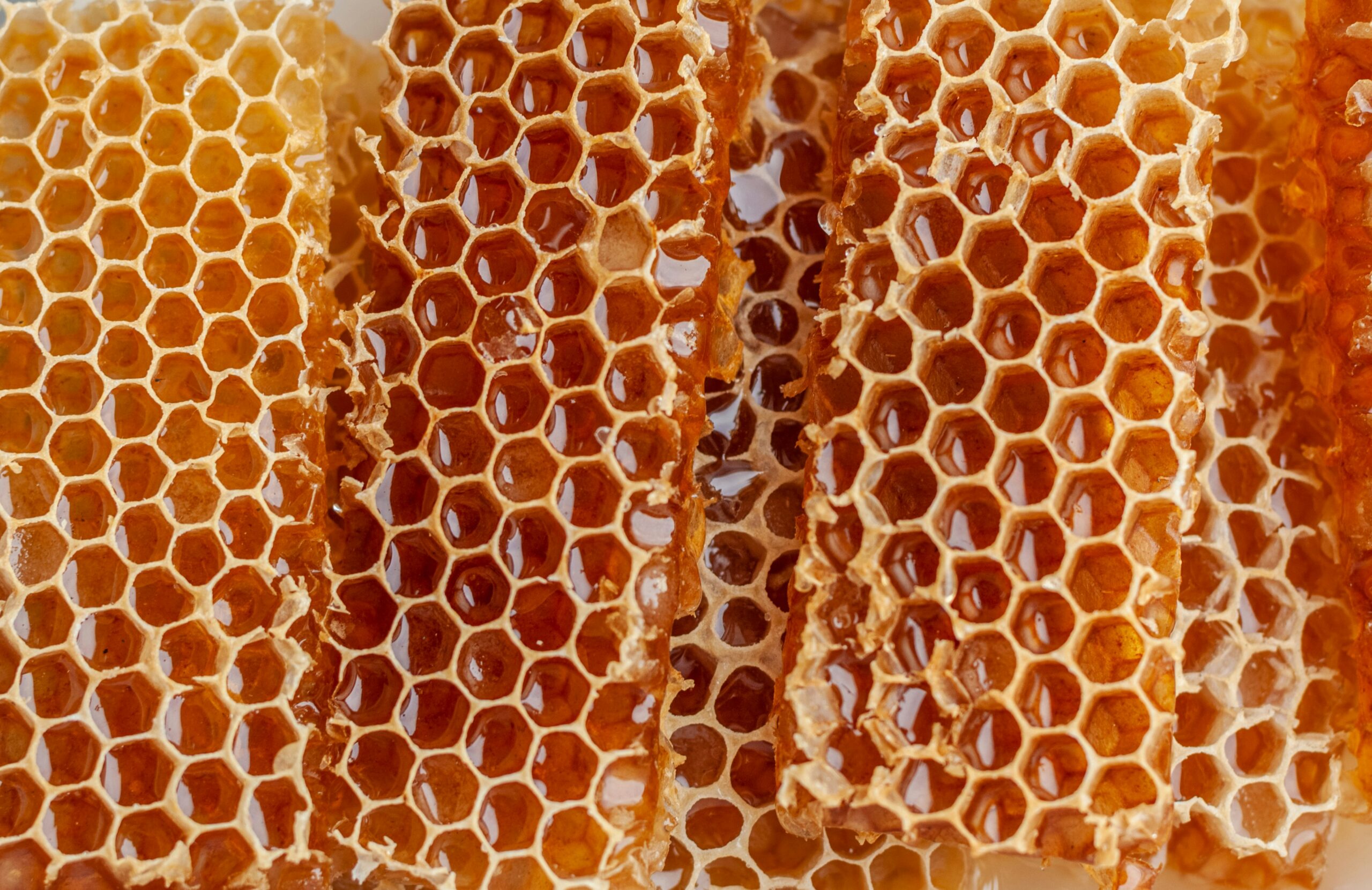
The broad spectrum of substances that enter into the composition of honey allows, when used correctly, not only to sustain the metabolic processes necessary for the organism's life but also to take an active part in treating pathological conditions occurring in the body. The complexity of honey's chemical composition also determines the extent of its therapeutic action on the body. The health benefits of honey include:
Thanks to the enzymatic oxidation reaction of glucose and a dense consistency that limits oxygen dissolution, honey does not contribute to the growth of yeast and bacteria in the body. In addition, we find hydrogen peroxide, a substance with strong antibacterial properties. Thanks to the bees, antibiotic substances found in honey belong to lysozyme![]() and apidicin. Some scientific studies suggest that honey can even inhibit bacterial growth to a minimal level. There is a reason why honey is known as a natural antibiotic that brings immense relief from infections.
and apidicin. Some scientific studies suggest that honey can even inhibit bacterial growth to a minimal level. There is a reason why honey is known as a natural antibiotic that brings immense relief from infections.
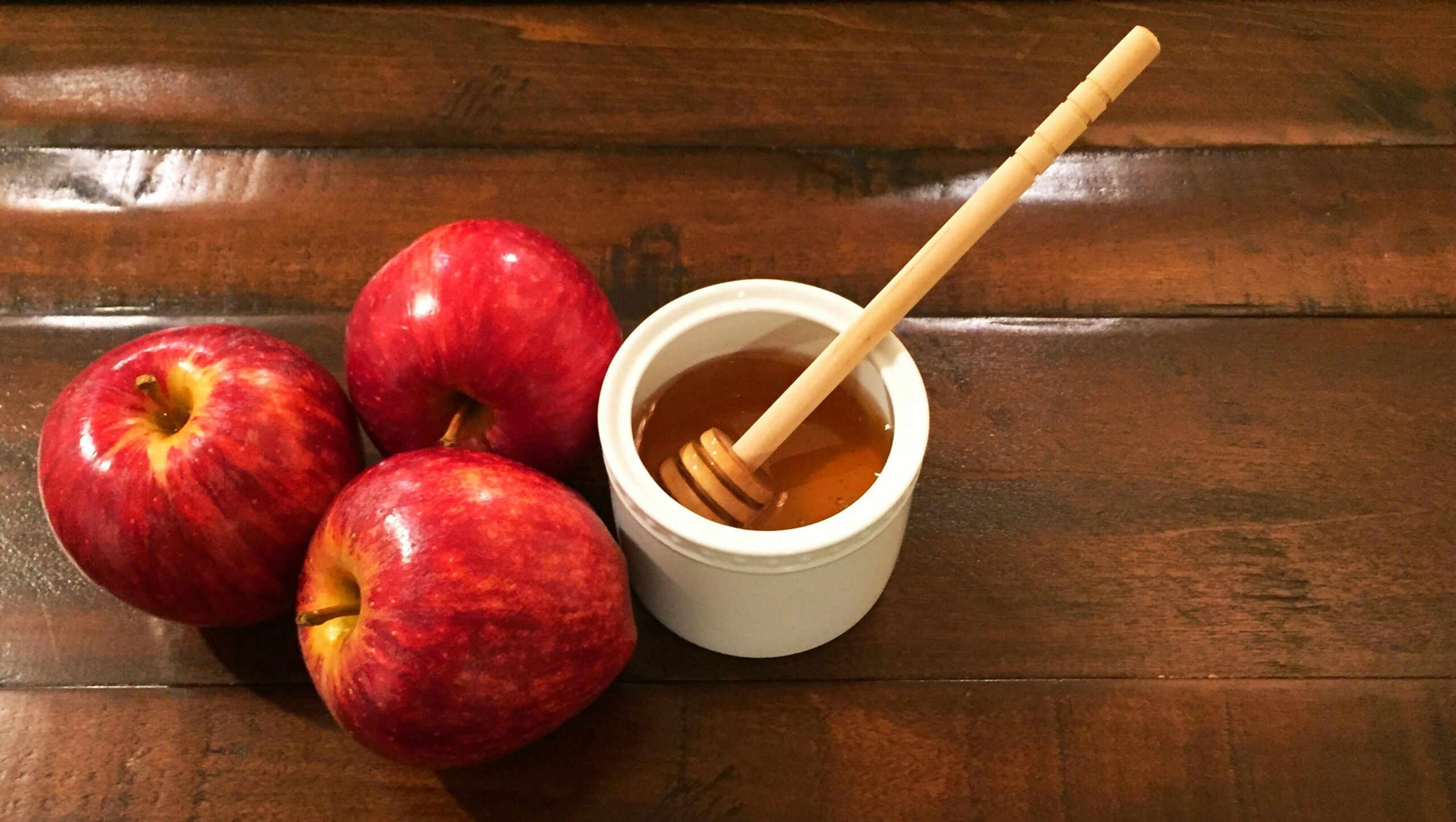
Honey accelerates wound healing and reduces the inflammatory response thanks to its polyphenol and flavonoid content. In addition, it increases the number of lymphocytes, antibodies, eosinophils, neutrophils, and monocytes, positively affecting immunity and supporting the fight against infections. It can reduce the symptoms accompanying allergies or dermatitis, such as swelling, exudation, and redness.
The best anti-inflammatory properties are demonstrated by dark kinds of honey, which are rich in phenolic compounds. Honey is particularly recommended in the case of colds, as it is characterized by its generally strengthening, anti-inflammatory, expectorant, and anti-coughing effects. Honey is used in the treatment of diseases of the respiratory tract![]() .
.
One of the most valuable properties of honey is its antioxidant properties, for which organic acids and amino acids with polyphenols are responsible. Antioxidants are chemical compounds whose primary function is to neutralize free oxygen radicals. Free radicals are particles that accelerate the aging process and increase the risk of disease. It also plays a role in the body's defense against bacteria or viruses.
It is worth noting that the human body has several defense mechanisms designed to neutralize the damaging effects of free oxygen radicals. However, a vital role in reducing oxidative damage is played by small-molecule antioxidants, i.e., compounds of exogenous origin, which are supplied to the human body on an ongoing basis with food.

Prebiotics mainly increase the amount of beneficial bacteria in the gut. Honey, thanks to its oligosaccharide content![]() , is a nutrient for the intestinal microflora. Prebiotics are non-digestible oligosaccharides that act like a fertilizer on intestinal bacterial populations, accelerating the growth of beneficial organisms. Oligosaccharides selectively stimulate the growth of lactobacilli, mainly of the genera Lactobacillus and Bifidobacterium. Increasing the population of these bacteria reduces the number of pathogenic microorganisms. Therefore, honey supports the maintenance of healthy intestinal bacterial flora.
, is a nutrient for the intestinal microflora. Prebiotics are non-digestible oligosaccharides that act like a fertilizer on intestinal bacterial populations, accelerating the growth of beneficial organisms. Oligosaccharides selectively stimulate the growth of lactobacilli, mainly of the genera Lactobacillus and Bifidobacterium. Increasing the population of these bacteria reduces the number of pathogenic microorganisms. Therefore, honey supports the maintenance of healthy intestinal bacterial flora.
In addition to its antimicrobial effect and reducing the severity of cold symptoms, honey also has immunostimulating and immunomodulating effects![]() . Regular consumption of honey contributes to stimulation and increased production of antibodies by the immune system. It prepares the immune system to fight a possible infection caused by microorganisms as the body's defense forces increase. Honey also accelerates the body's regeneration, another critical reason to use it in the fight against cold symptoms.
. Regular consumption of honey contributes to stimulation and increased production of antibodies by the immune system. It prepares the immune system to fight a possible infection caused by microorganisms as the body's defense forces increase. Honey also accelerates the body's regeneration, another critical reason to use it in the fight against cold symptoms.
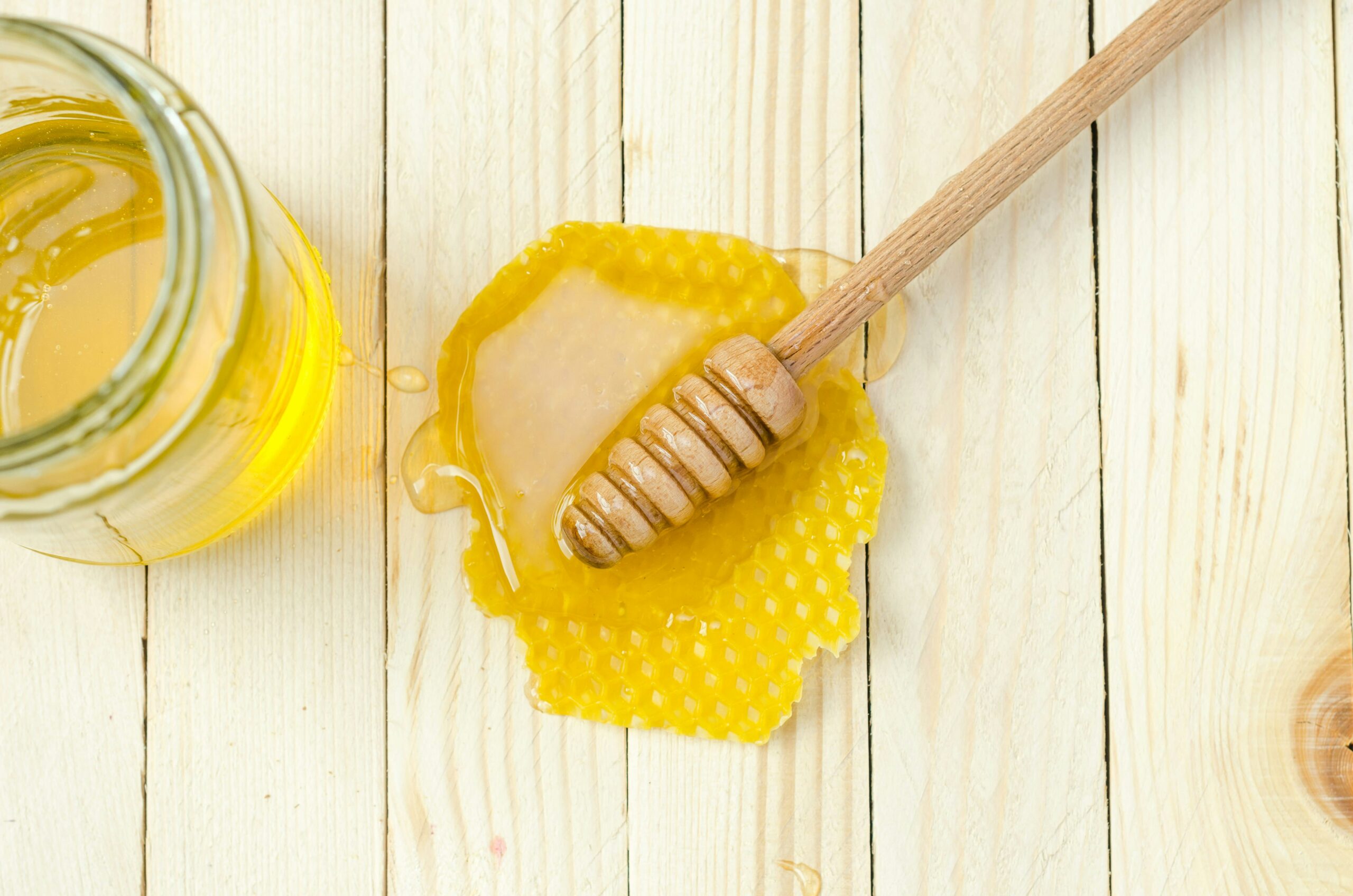
The effect of honey's components on the nervous system's functioning is also significant. Honey contains natural, simple sugars that properly nourish the brain and help to increase energy levels. As a result, it improves concentration and memory—honey's components help reduce excitability and nerve cell tension. Honey, therefore, helps to relieve stress levels![]() . The sodium and potassium ions' content helps maintain the electrolyte balance, which also results in the proper functioning of the nervous system. States of prolonged tension, nervousness, and stress adversely affect the body's immunity, which is why regular consumption of honey can increase immunity protection, especially in people prone to anxiety.
. The sodium and potassium ions' content helps maintain the electrolyte balance, which also results in the proper functioning of the nervous system. States of prolonged tension, nervousness, and stress adversely affect the body's immunity, which is why regular consumption of honey can increase immunity protection, especially in people prone to anxiety.
Honey, a natural medicine, has been around for hundreds of years. Honey is also employed in dermatology and cosmetology. Due to its content of active ingredients, various types of honey are recommended for different conditions. However, to ensure that honey retains its valuable properties, you must take care of its proper storage.
Honey should be stored at room temperature and in a shady place. To not negate its beneficial effects, it should not be heated above the temperature of 35°C/95°F![]() . There is a belief that honey should be added to hot tea when you have a cold. However, it should not be done because honey loses most health properties in hot tea. Instead, it is best to add honey to the cooled beverage.
. There is a belief that honey should be added to hot tea when you have a cold. However, it should not be done because honey loses most health properties in hot tea. Instead, it is best to add honey to the cooled beverage.

Also, choose non-pasteurized kinds of honey to benefit from the health-promoting effects of flavonoids. In the case of honey, the pasteurization process can nullify many health properties. Also, remember not to give honey to children before age one. It is not suitable for infants due to the presence of spores that can cause botulism in toddlers.
You can also eat honey on bread, as a salad topping, or directly from the jar with a spoon. You can eat several teaspoons a day, depending on your needs. Remember, however, that honey is high in calories and sugar. Consuming honey at any time of the day benefits your body. In practice, it makes little difference whether you eat honey in the morning or the evening. However, the most important thing is to do it regularly because only then will we notice and feel the beneficial effects of honey on our bodies.
Bee honey is a natural product made from flower nectar or honeydew. The bees collect the sap of the nectar or honeydew, process it in the hive, and enrich it with enzymes. Bee honey varies in color, flavor, aroma, consistency, and type of crystallization, depending on its origin and the raw materials from which they are made.
Chemically speaking, honey is a concentrated aqueous solution of sugars consisting mainly of simple carbohydrates. Honey contains small amounts of proteins, vitamins, and minerals. In addition, valuable organic acids and polyphenols can be found in honey. Honey and bee products have many health-promoting properties.
The antioxidants in honey bind to and neutralize free radicals and can prevent various diseases. Honey is also antibacterial and anti-inflammatory, so it is often used for colds. In addition, honey has a beneficial impact on the immune and nervous systems. Honey can be eaten regularly to benefit from its health properties. However, proper conditions of consumption and storage should be kept in mind.